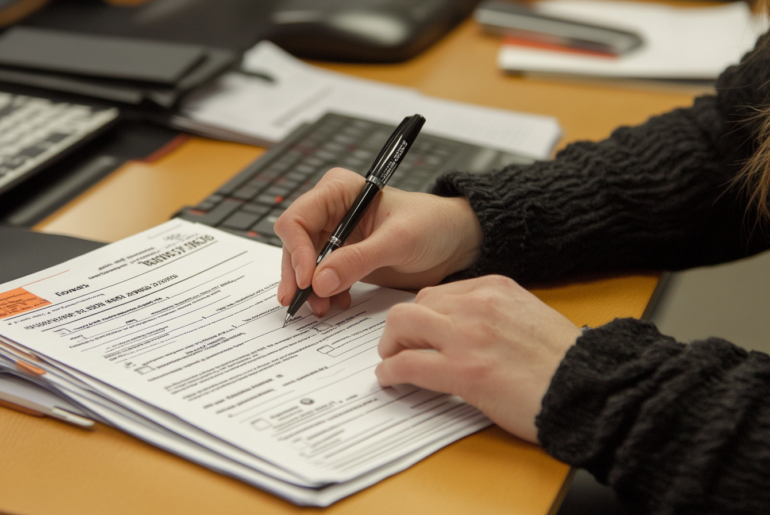This article may contain references to products or services from one or more of our advertisers or partners. We may receive compensation when you click on links to those products or services. Nonetheless, our opinions are our own.
The information presented in this article is accurate to the best of our knowledge at the time of publication. However, information is subject to change, and no guarantees are made about the continued accuracy or completeness of this content after its publication date.
- Key Highlights
- Introduction
- Understanding Temporary Accounts
- Definition and Purpose of Temporary Accounts
- How Temporary Accounts Work in Bookkeeping
- Identifying Temporary Accounts
- Conclusion
- Frequently Asked Questions
- Recommended Reads
Key Highlights
- Temporary accounts reset to zero at the end of each accounting period. This means their balances do not move to the next period.
- Common temporary accounts include revenue, expense, and dividend accounts. These accounts help us understand how a company does in a certain time.
- Permanent accounts keep their balances. They collect financial information over time, like a company’s assets, liabilities, and ownership.
- To close temporary accounts, we transfer their balances. This affects retained earnings and gives a clearer view of the company’s finances.
- Managing these accounts well is important for making accurate financial statements and good business decisions.
Introduction
In accounting, you need to know about temporary accounts. These accounts help track a company’s money activity for a specific time. Temporary accounts keep financial information for just a short period. They show details about a company’s profit during that time. This article will explain what temporary accounts are, why they matter, and how they differ from permanent accounts.
Understanding Temporary Accounts
Temporary accounts, also known as nominal accounts, track short-term money activities. These accounts reset at the end of each accounting period. You can see them as a short review of how finances are doing at a certain time. When the period ends, the balances in these accounts go to permanent accounts.
This system shows that money performance changes from one time to another. This way, we can see a clear view of each year.
Voted "Best Overall Budgeting App" by Forbes and WSJ
Monarch Money helps you budget, track spending, set goals, and plan your financial future—all in one app.
Get 50% OFF your first year with code MONARCHVIP
Definition and Purpose of Temporary Accounts
Temporary accounts track money for a certain period. They help businesses see how much they earn and spend. This helps them figure out their net income for that time. For instance, there are revenue accounts for sales, accounts for rent and salaries, and an income summary account.
The main aim of temporary accounts is to show how a company performs over a specific time. At the end of each accounting year, these accounts close. Their balances return to zero. This helps businesses track their income and expenses separately for each new period. It keeps their reports and profit checks clear.
How Temporary Accounts Work in Bookkeeping
During a certain time, money going in and out is kept in short-term accounts. At the end of that time, these accounts are closed. Their amounts are moved to the retained earnings account. This account is long-term and is found on the balance sheet.
The retained earnings balance shows how much profit or loss there has been over time. This means the income statement starts at zero at the beginning of the next accounting period.
Closing and resetting accounts help money reports show each time period on its own.
Identifying Temporary Accounts
Temporary accounts appear in the income statement. They show how well a company is performing during a specific time. These accounts include:
- Revenue Accounts: Check all the money coming in during this time. This includes sales, service payments, and interest earned.
- Expense Accounts: Track all costs needed to make money. This includes rent, salaries, utilities, and advertising fees.
- Drawing Account (for sole owners and partnerships) or Dividend Accounts (for companies): Show payments made to business owners or shareholders as profit.
Differences Between Short-Term and Lasting Accounts
| Feature | Permanent Accounts | Temporary Accounts |
|---|---|---|
| Alternative Name | Real Accounts | Nominal Accounts |
| Purpose | Show financial position at a specific time | Show financial performance over a period |
| Account Reset | Not closed at the end of the accounting period | Closed at the end of the accounting period |
| Balance Carryover | Balances carry over to the next period | Balances reset to zero in the next period |
| Financial Statement | Shown on the balance sheet | Shown on the income statement |
| Examples | Assets, liabilities, equity | Revenues, expenses, dividends |
Temporary accounts show how a company did over a certain time. Permanent accounts show a long-term view of the company’s money situation.
Short-Term Accounts and Their Importance in Money Management
Temporary accounts play a key role in money management. They allow businesses to check their performance, spot trends, and make smart decisions.
Keeping track of income and expenses in short-term accounts helps businesses find ways to improve. It can boost profits and keep their finances stable.
Balancing and Closing Temporary Accounts
At the end of each accounting period, temporary accounts go through a closing process. This helps to reset their balances for the next period. It involves moving the balances to retained earnings. This enables a fresh start for the new period.
The process changes money records. It includes moving their totals to a summary account. Then, the net income or loss goes to retained earnings. This step is important for keeping clear financial statements.
Impact on Financial Statements
Temporary accounts play an important role in financial statements. When we close revenue and expense accounts, it directly changes the net income displayed on the income statement.
When net income or loss goes into retained earnings, it changes the equity section of the balance sheet. This helps keep reports clear and shows the company’s financial state correctly.
Beginner’s Guide to Using Temporary Accounts
Managing short-term accounts is important for having clear money records. New users can follow these simple steps:
Step 1: Setting Up Temporary Accounts
Temporary accounts start with a balance of zero at the beginning of each accounting period. This way, it keeps money details from one period from going into the next.
Transactions must be recorded using double-entry bookkeeping. In this system, every debit has a related credit. For example, if you make a cash sale, you would debit the cash account (which is an asset) and credit the sales revenue account (which is a short-term account).
Step 2: Writing Down Transactions in Short-Term Accounts
Each money activity must be recorded in the correct account. Income deals should go into income accounts, while costs go into cost accounts.
Proper classification is important for clear money reporting. Mixing up transactions can change the money statements and make it hard to see the company’s real performance.
Step 3: Finishing Up and Starting Fresh When the Period is Over
At the end of each accounting period, we need to close the temporary accounts. This often occurs at the end of a month, a three-month period, or a year. The closing process moves the balances from temporary accounts to retained earnings, which is a permanent account.
Revenue accounts with credit balances are closed by debiting them and adding to the income summary account. Expense accounts with debit balances are closed by crediting them and taking from the income summary account. The net income or loss in the income summary account is moved to retained earnings. This resets the temporary accounts for the next period.
Conclusion
Understanding temporary accounts is important for keeping records clear and making smart business choices. These accounts track money coming in and going out during a specific time. At the end of each accounting period, they reset and impact the overall profits. By managing temporary accounts well, a business can have clear statements. This helps them see how they are doing and plan for the future.
Frequently Asked Questions
What occurs if you put money in accounts for a short time?
Keeping money in short-term accounts can affect how we report our finances. In a sole proprietorship, a drawing account helps track the money taken out, but it is different from a cash account. Other short-term accounts should be closed at the end of each period to maintain good records.
Can Temporary Accounts Affect Your Money Reporting?
Yes. Short-term accounts help find net income. This is important for money reports. Good management helps show a company’s financial health over different time periods.
How Often Should Temporary Accounts Be Reset?
Temporary accounts should be reset at the end of each accounting period. This can be monthly, every three months, or once a year. It helps keep the money activity from one time separate from another.
What Are the Risks of Misusing Temporary Accounts?
Using temporary accounts incorrectly can lead to wrong financial reports. This makes it hard to see the true financial condition of a business. It is important to keep and sort records the right way to avoid mistakes in reports.
How can new users make sure they use short-term accounts the right way?
Beginners need to understand the difference between temporary and permanent accounts. It is important to record transactions right. Each debit entry needs a credit that matches it. You should also ask for help from accounting experts to stay on track.

Reviewed and edited by Albert Fang.
See a typo or want to suggest an edit/revision to the content? Use the contact us form to provide feedback.
At FangWallet, we value editorial integrity and open collaboration in curating quality content for readers to enjoy. Much appreciated for the assist.
Did you like our article and find it insightful? We encourage sharing the article link with family and friends to benefit as well - better yet, sharing on social media. Thank you for the support! 🍉
Article Title: Can You Keep Money in Temporary Accounts? Here’s What Happens
https://fangwallet.com/2025/03/06/temporary-accounts/The FangWallet Promise
FangWallet is an editorially independent resource - founded on breaking down challenging financial concepts for anyone to understand since 2014. While we adhere to editorial integrity, note that this post may contain references to products from our partners.
The FangWallet promise is always to have your best interest in mind and be transparent and honest about the financial picture.
Become an Insider

Subscribe to get a free daily budget planner printable to help get your money on track!
Make passive money the right way. No spam.
Editorial Disclaimer: The editorial content on this page is not provided by any of the companies mentioned. The opinions expressed here are the author's alone.
The content of this website is for informational purposes only and does not represent investment advice, or an offer or solicitation to buy or sell any security, investment, or product. Investors are encouraged to do their own due diligence, and, if necessary, consult professional advising before making any investment decisions. Investing involves a high degree of risk, and financial losses may occur including the potential loss of principal.
Source Citation References:
+ Inspo
There are no additional citations or references to note for this article at this time.












































